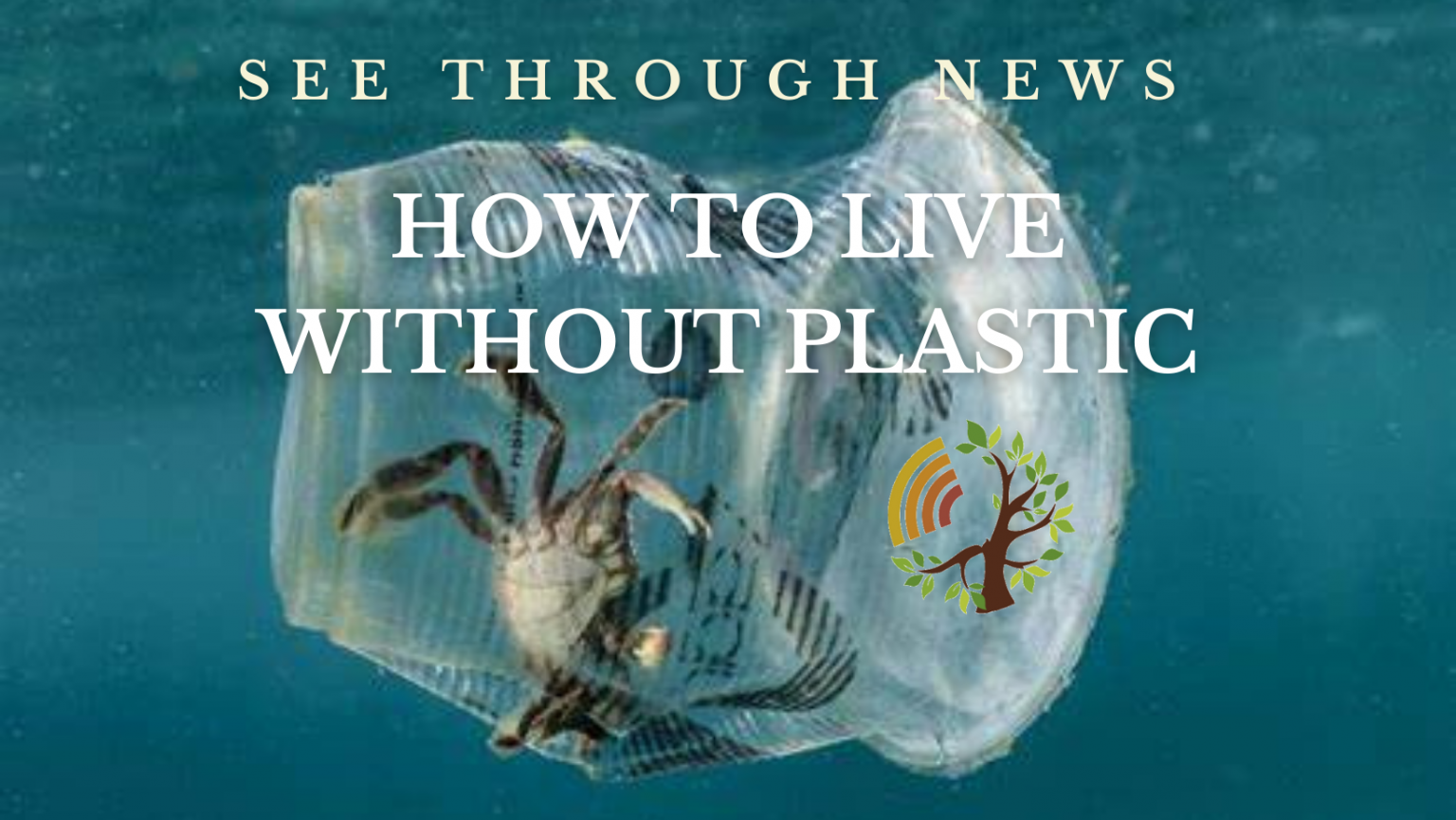A See Through News open source media project
How To Live Without Plastic Concept
This media literacy project’s concept is simple.
- Video anyone born before, say, 1960, and ask what life was like before plastic invaded everyday life.
- Upload it to form a global database.
- Anyone can then cut up, edit, suck data from, and generally explore this database to seek guidance on how to revert to a sustainable lifestyle that doesn’t depend on fossil fuel extraction.
Part informal oral history, part guide to a sustainable future. How To Live Without Plastic is a crowdsourced social media video project.
See Through News provides simple technical and methodological instructions, and an online infrastructure using Facebook, YouTube, TikTok etc.
Our Facebook Group can be found here, and our YouTube Playlist here.
How to make your own How To Live Without Plastic Video
Here’s our 12-step guide:
- INTERVIEWEE: Find an old person who remembers life before plastic
- PREPARE: Follow our basic guide to video interviewing
- INTERVIEW: Start recording, using your smartphone, a camera, or via Zoom
- QI: Ask your interviewee ‘Please tell us your name, and what year you were born’. Let them answer until they run out of words.
- Q2: Now ask ‘How did you live before plastic?‘ If they understand what you’re asking, let them speak uninterrupted.
- Q3: They may not completely understand what you’re asking, or why. Look around, find something made of plastic, show it to them, and ask :‘For example this bucket/bag/pen/container/window frame/toy – what did you used to do before plastic came along?‘. Let them answer until they run out of words
- Q4: Ask a broader question, connecting it to climate change, like: ‘We’re now discovering how plastic is everywhere – at the top of Everest, at the bottom of the ocean, in babies’ blood, in whale stomachs, and we need to stop using is right now. But we don’t remember a time before plastic, which is why we’re asking you. What advice can you give the next generation?’. This may elicit a different kind of answer from the first question. Let them answer until they run out of words.
- Q5: Ask ‘What do you think we need to do to change our ways, and stop using plastic?’
- Q6: Ask ‘Do you think we can rely on individuals changing their own behaviour, or will it require government regulation?’
- LABEL VIDEO FILE: Change the file name to HTLWP.[your name].[location of interview[.[interviewee’s name].Age[insert interviewee’s age]. e.g. Sternwriter.Salisbury.JohnGrigsby.90.mp4
- Submit your re-labelled interview to the HTLWP project in one of 2 ways: a) post to the How To Live Without Plastic Facebook Group, b) email file or link to file to HTLWP@seethroughnews.org,
- Edit your own video, and upload/send by the same means.
HTLWP as part of our community filmmaking project
As part of the pilot version of See Through News’s community filmmaking pilot project ‘1 Sunday Morning, 4 Films’, we trained local community volunteers in the basics of filmmaking.
One of them, James Hurst, added a personal touch in the form of his introduction, but then followed the How To Live Without Plastic format described here, on our Facebook Group, and on our YouTube channel playlist, to fascinating and entertaining effect.
James’ film, which shows how residents of Finchley, north London, managed to live without plastic. Interestingly many of them spoke about how everything used to be delivered. These days, we’re starting to see the negative impacts of one-click delivery to our doors by vehicles on carbon output, pollution and traffic, but as these old Finchley residents tell us, it doesn’t have to be that way…

